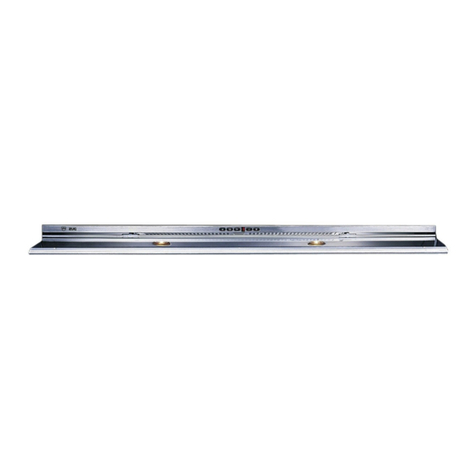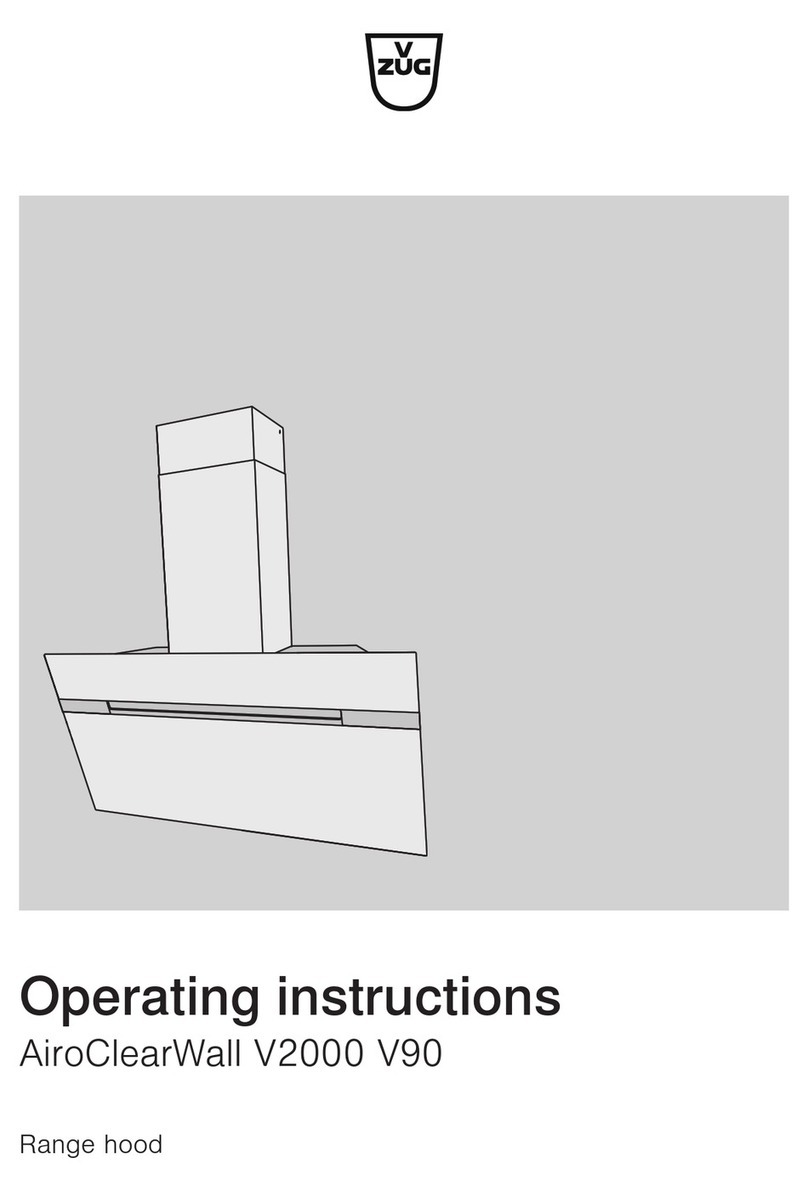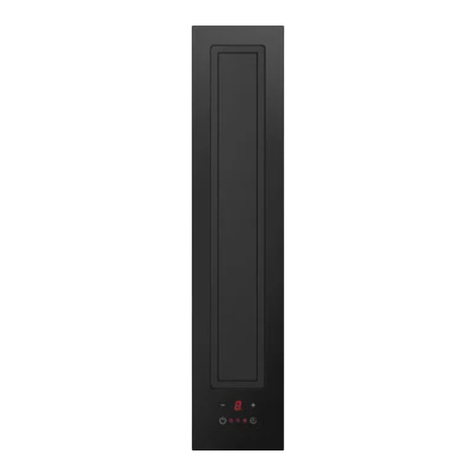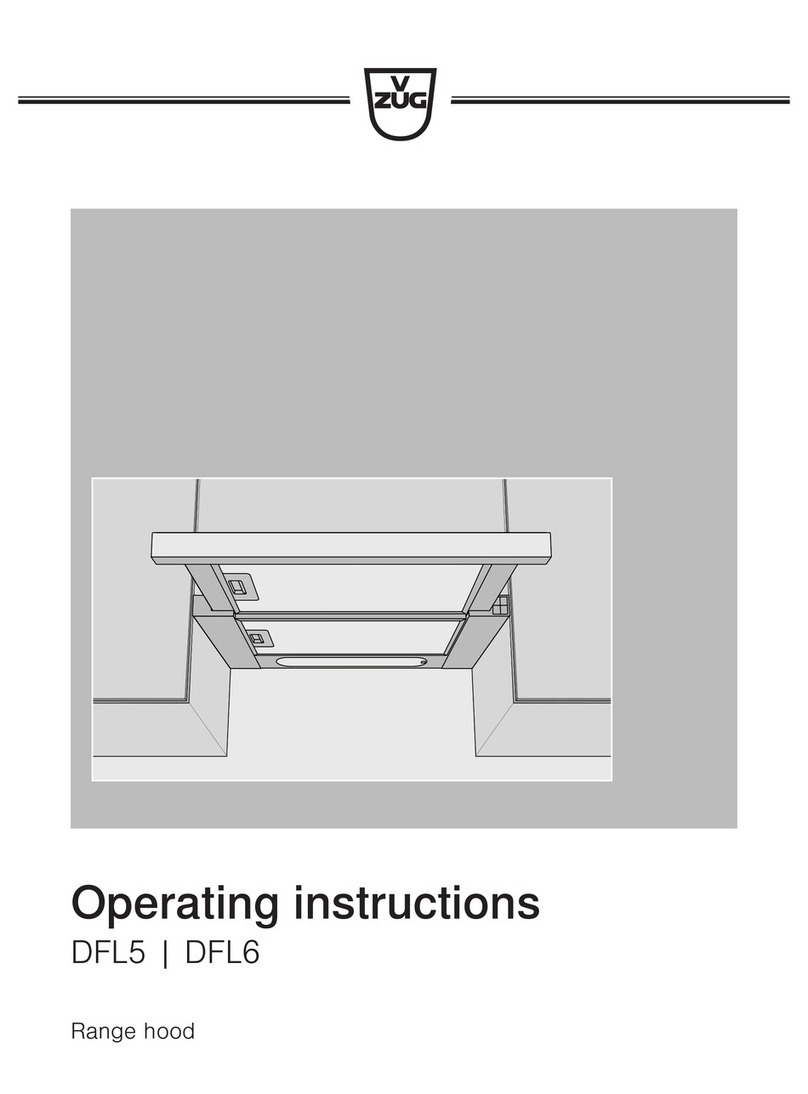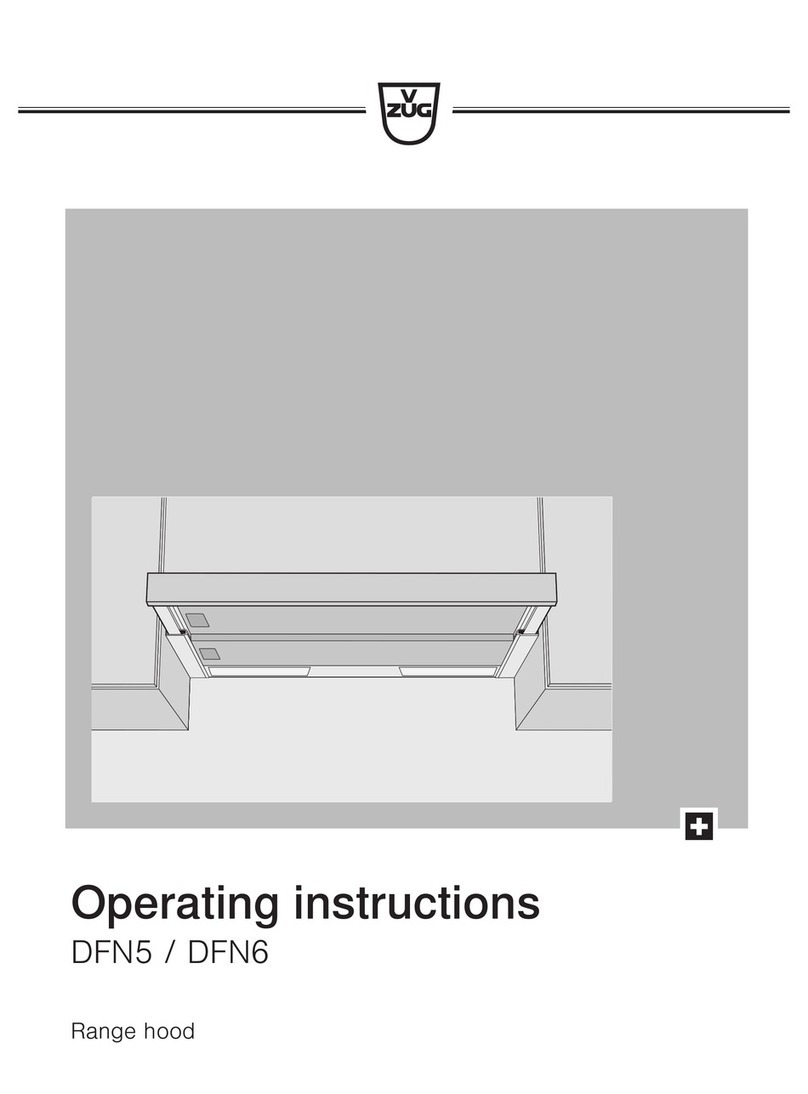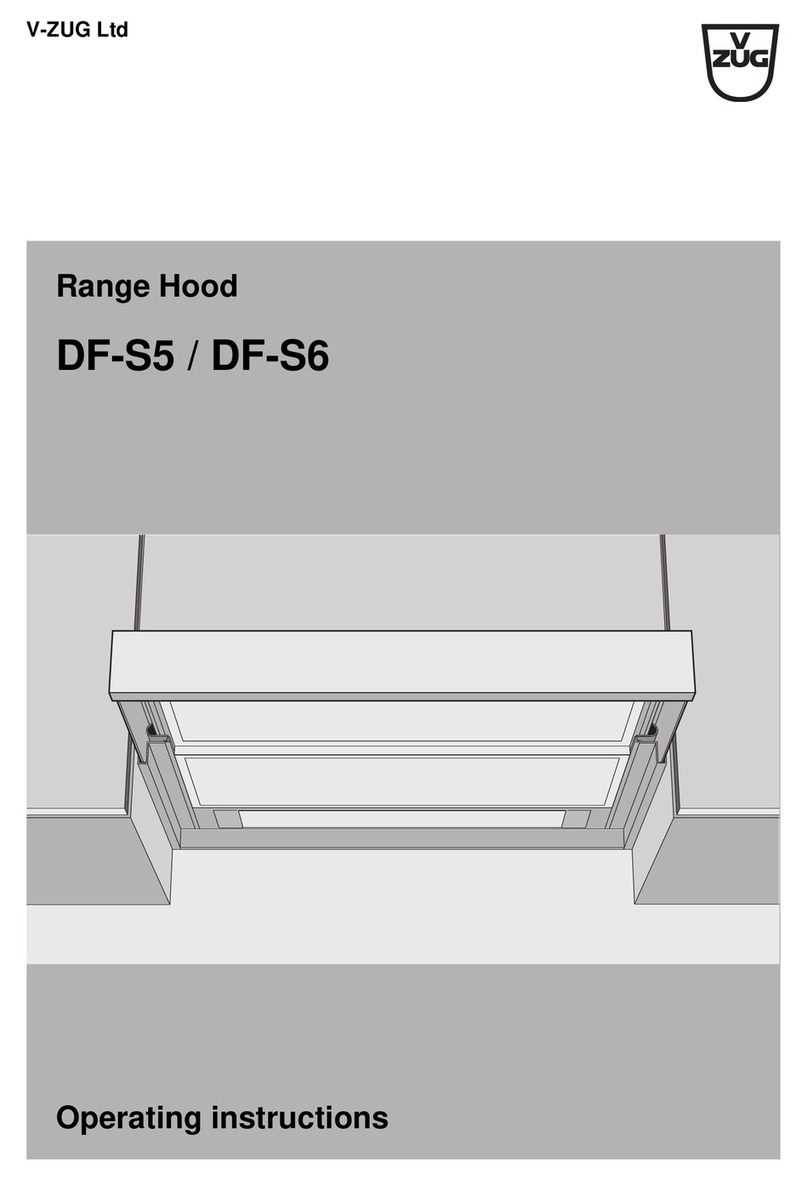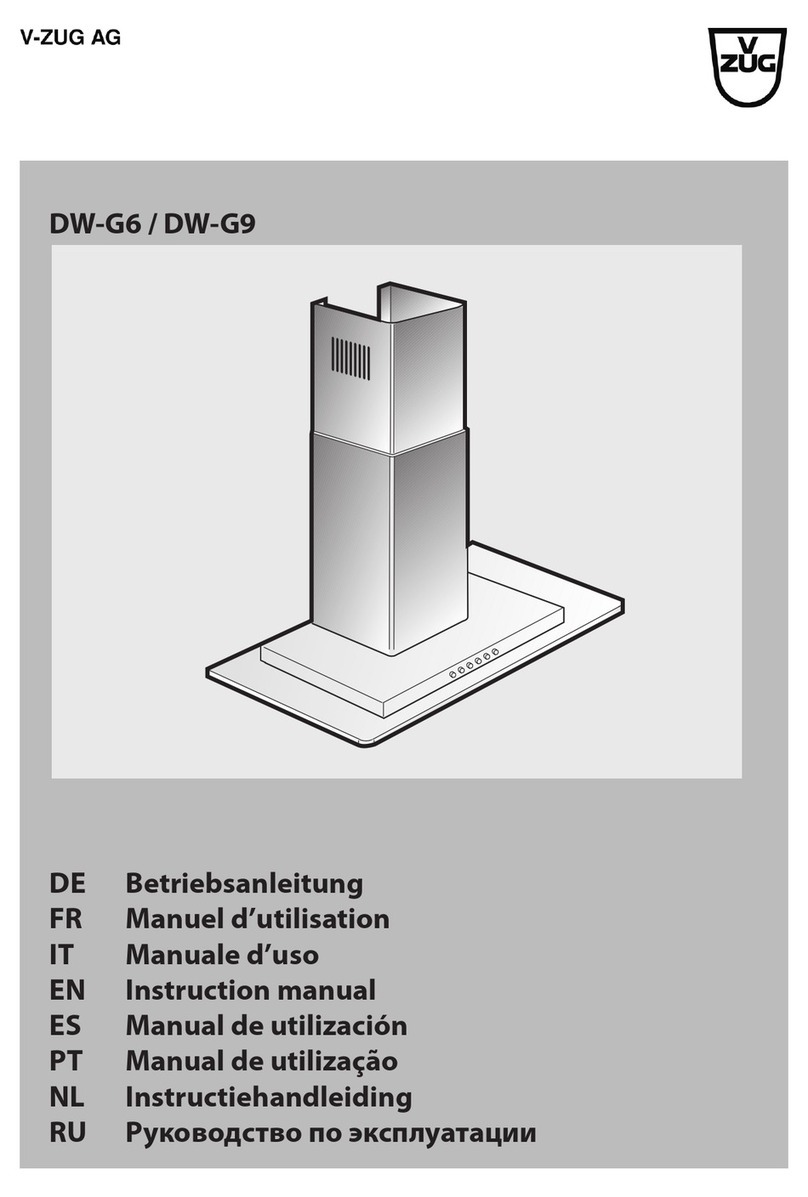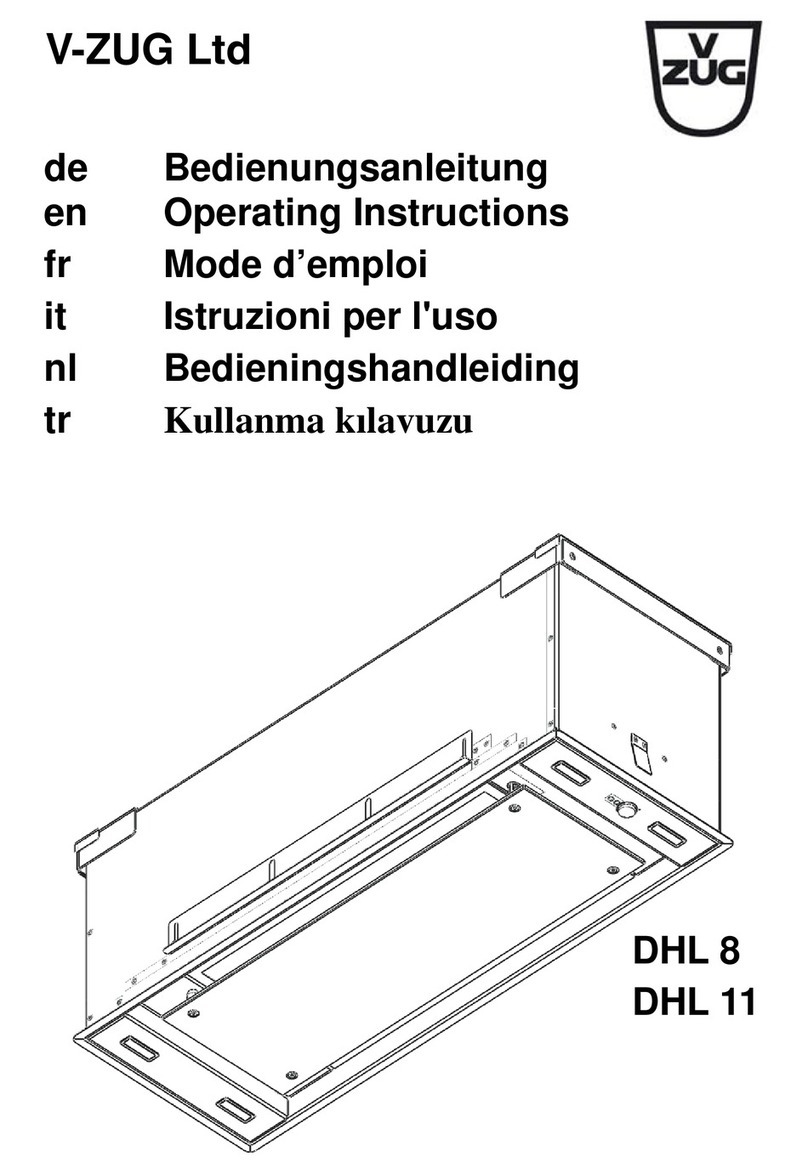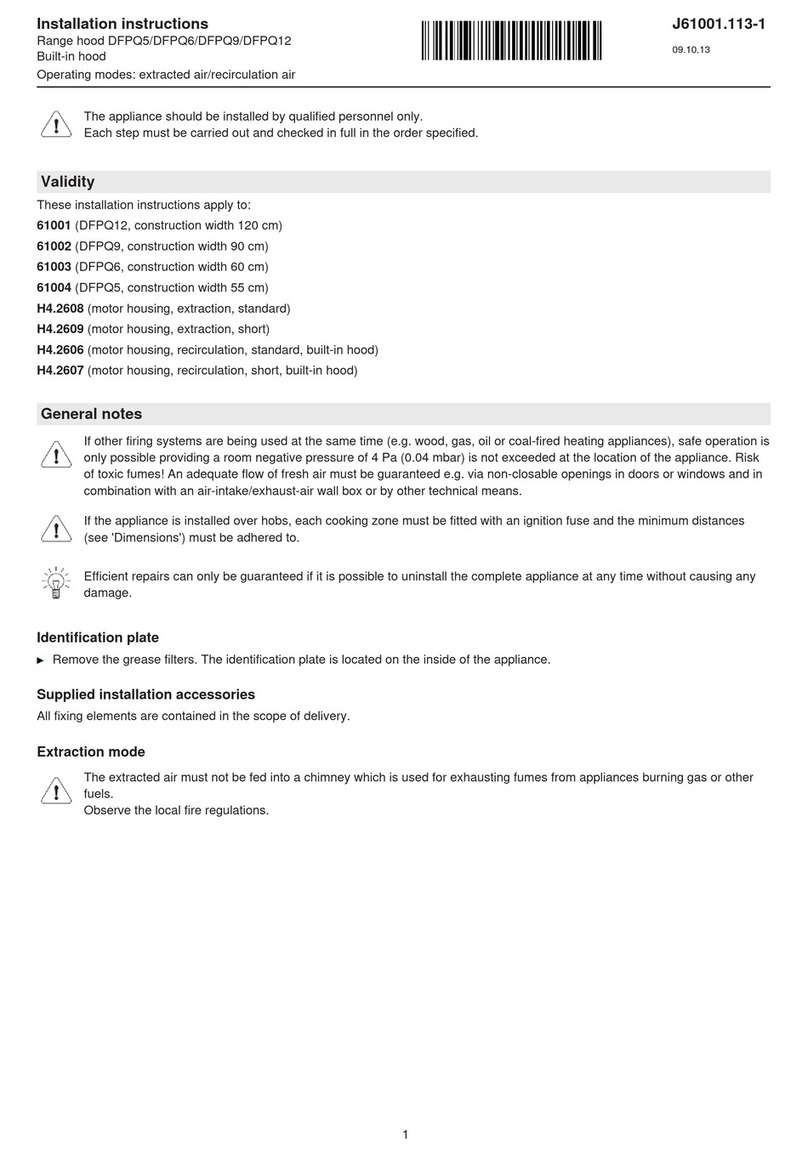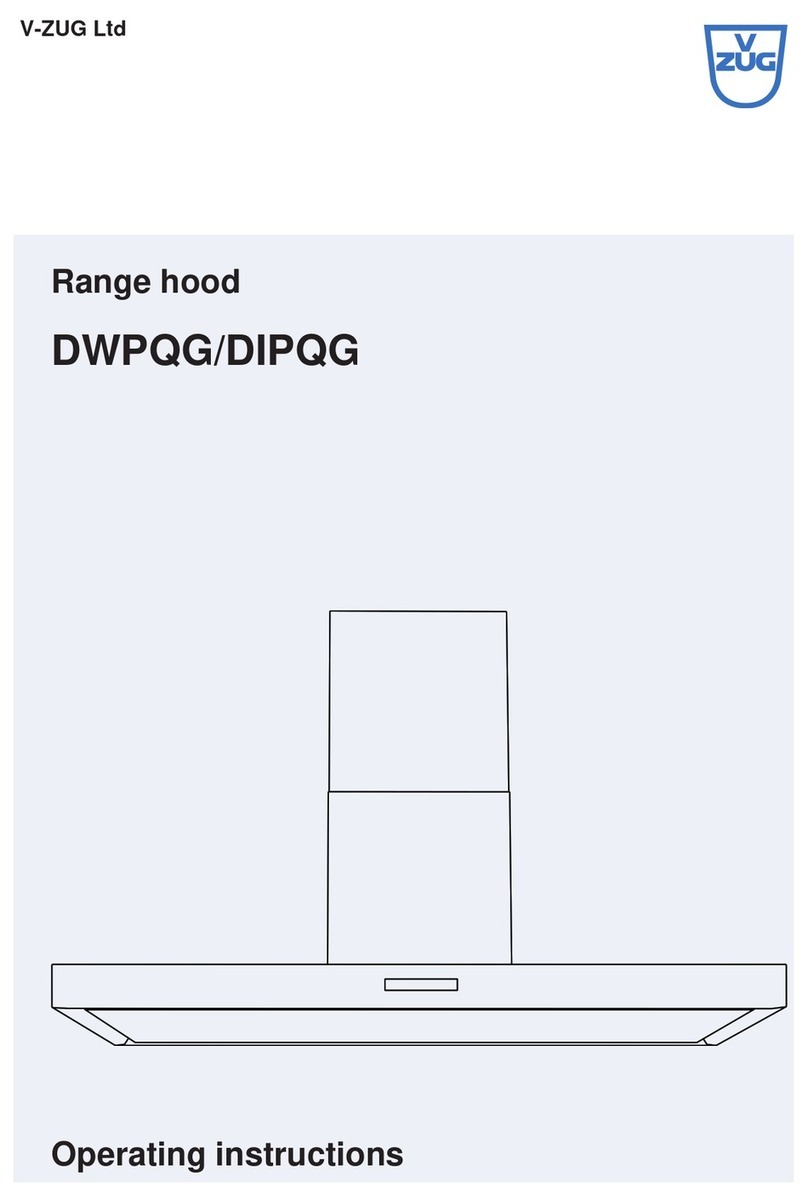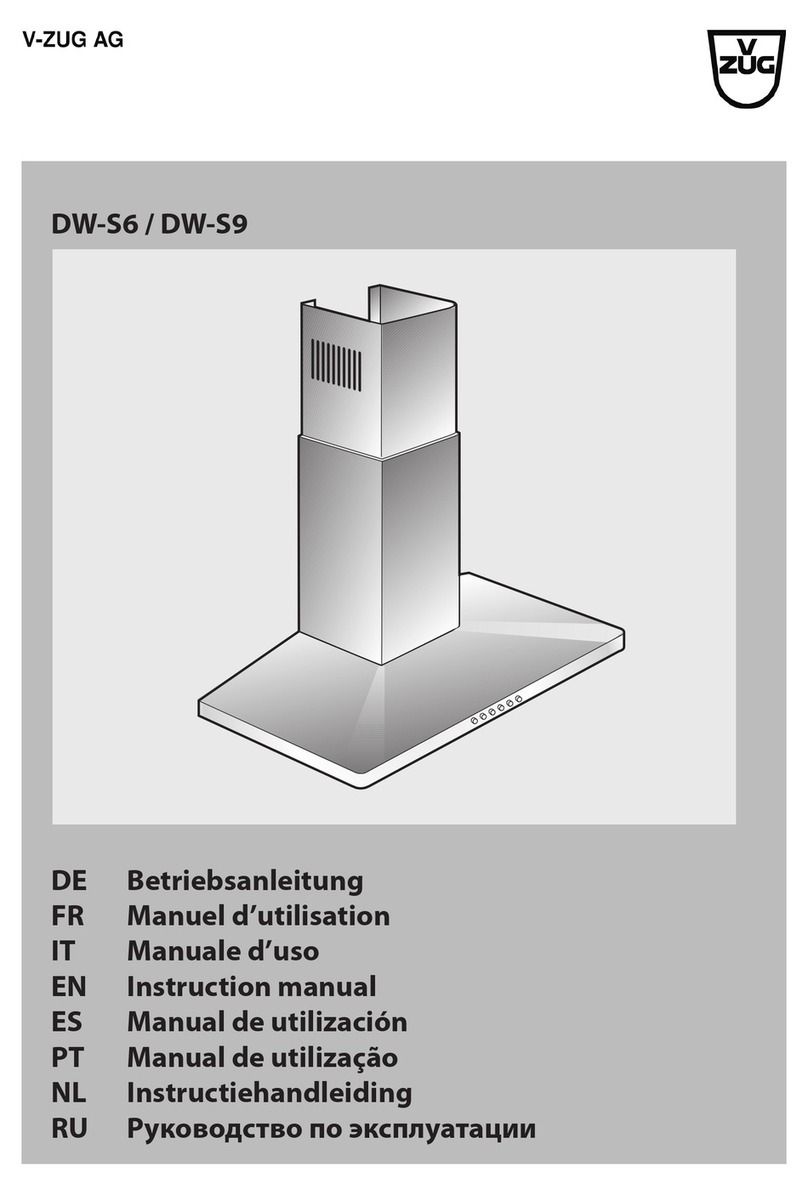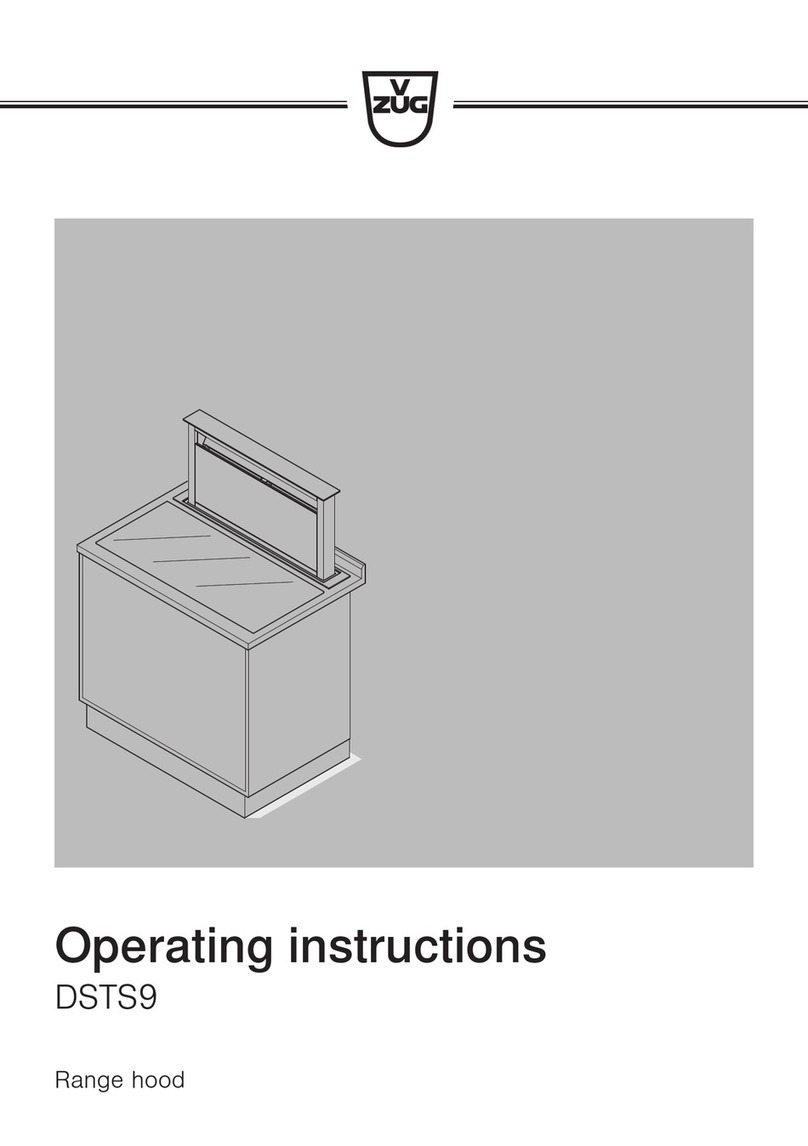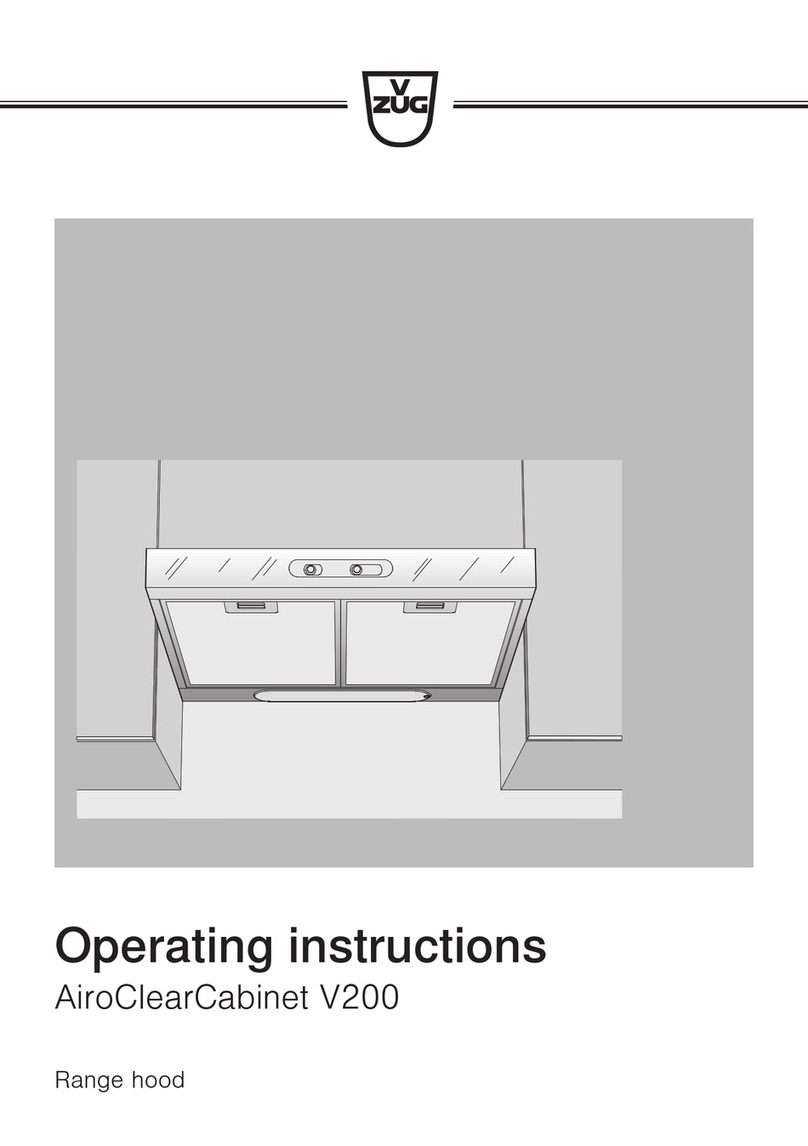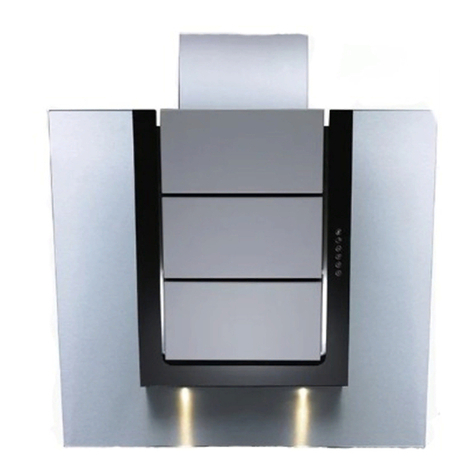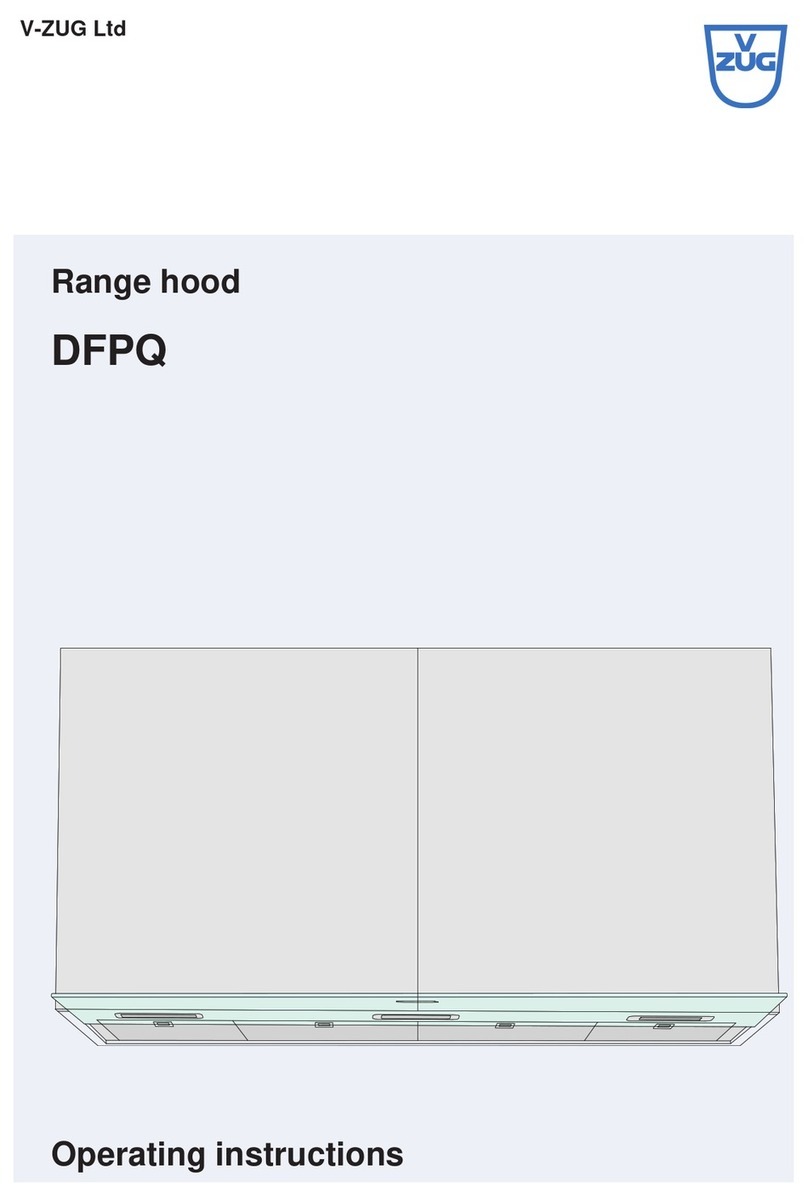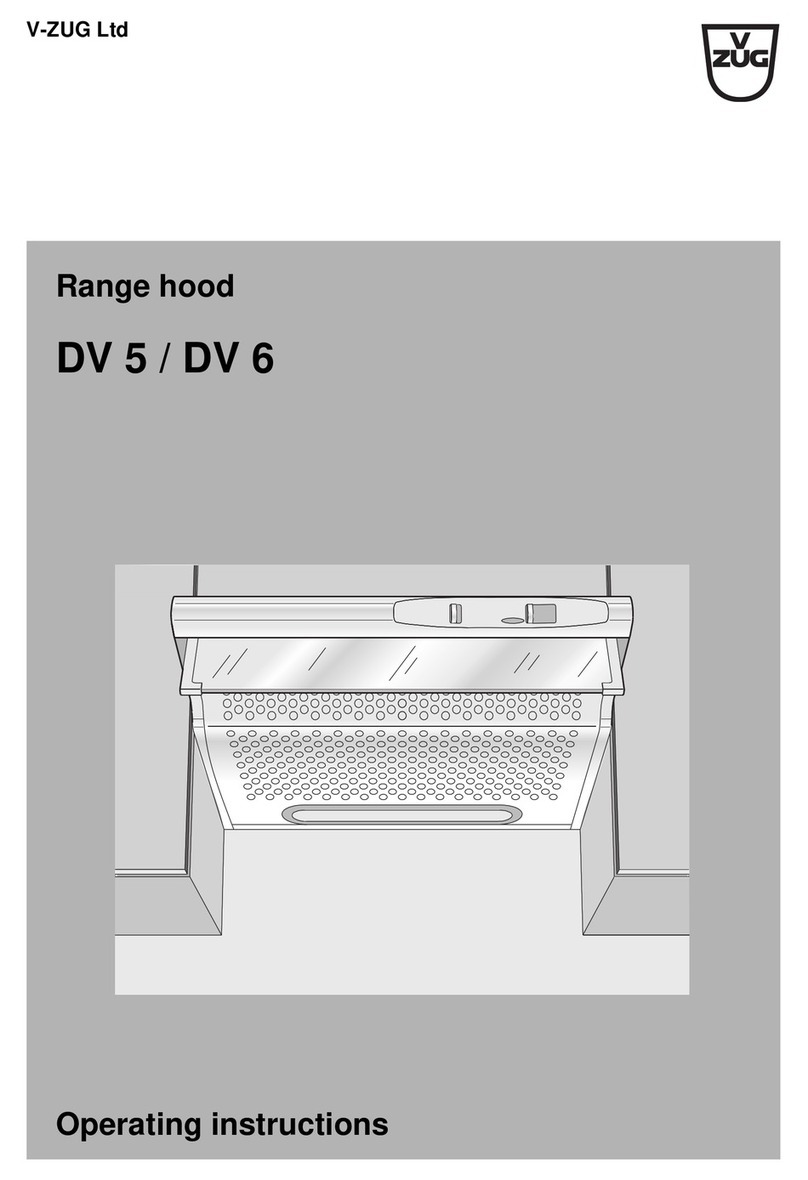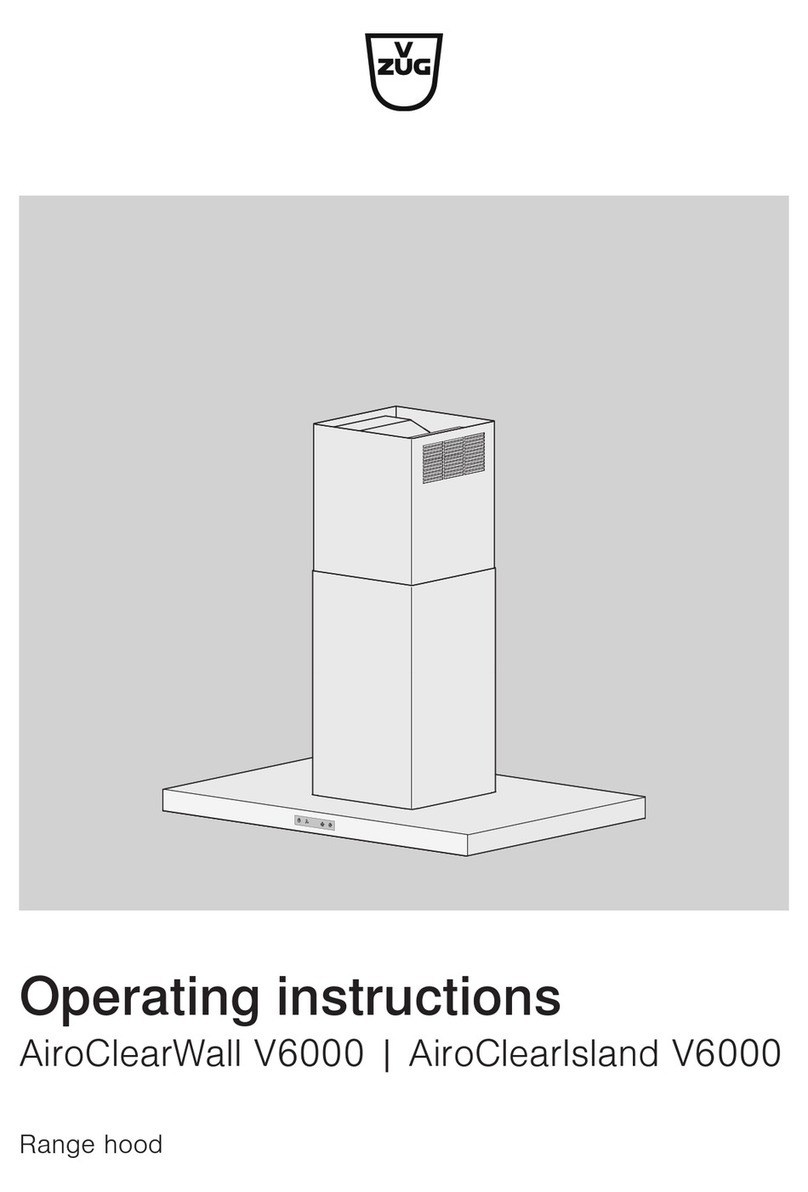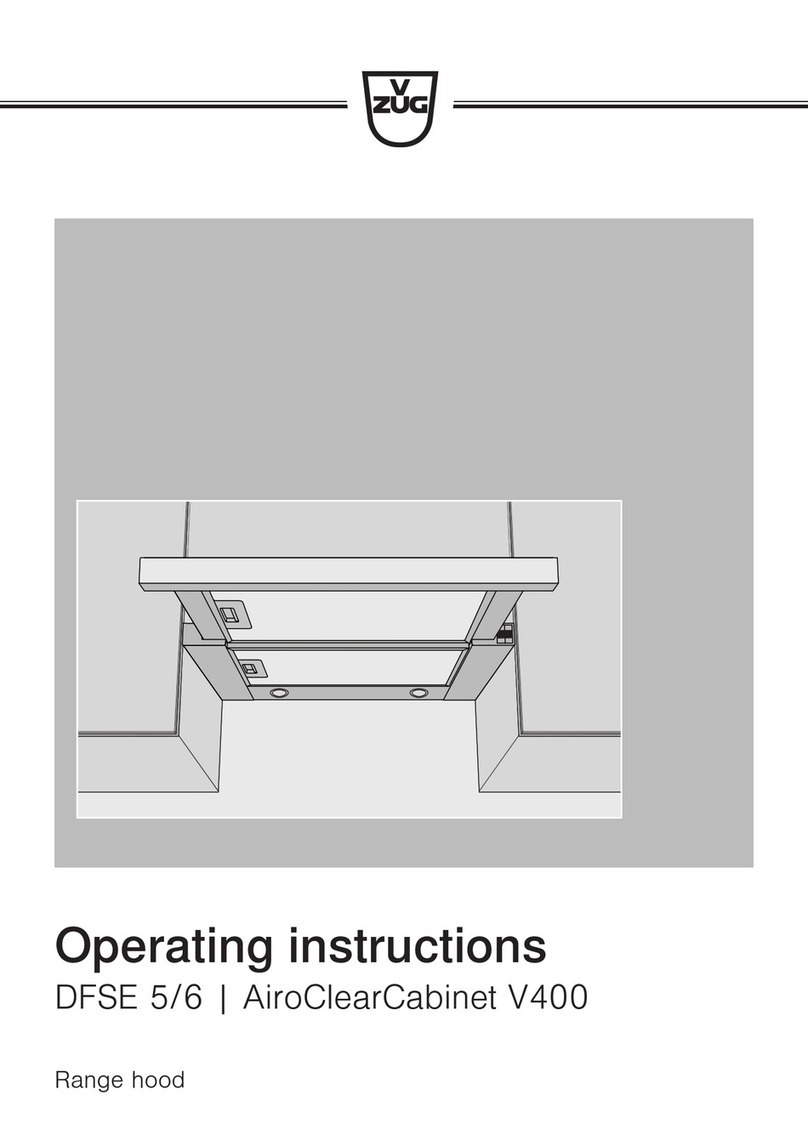
1 Safety precautions
6
▪Using another gas appliance type/
model or manufacturer is not permitted
and can cause lasting damage to the
range hood.
▪Combining the hob hood with two gas
hobs is not permitted! Failure to ob-
serve the above instruction can cause
lasting bodily harm and lasting damage
to property and the appliance. In such a
case, any and all liability, guarantee and
goodwill claims will be rejected, now
and in the future!
▪Observe the official regulations for the
exhaust-air layout.
▪Dispose of the packaging material in
accordance with local regulations.
Correct use
▪The appliance is designed for use in
the home for extracting cooking fumes
and smells from above the cooking sur-
face.
▪Any repairs, modifications or manipula-
tions to the appliance, especially any
electrically live parts, may only be car-
ried out by the manufacturer, its cus-
tomer service department or similarly
qualified persons. Repairs if carried out
incorrectly may cause serious injury,
damage to the appliance and fittings,
as well as affect the functioning of the
appliance. If the appliance is not work-
ing properly or in case a repair is
needed, follow the instructions given in
the 'Service & Support' section. Contact
our Customer Services if necessary.
▪Use original spare parts only.
▪Retain these operating instructions for
future reference.
Note on use
▪If the appliance is visibly damaged, do
not use it. Contact our Customer Ser-
vices.
▪If the appliance is not functioning prop-
erly, disconnect it from the power sup-
ply immediately.
▪Ensure there is adequate ventilation
when the extractor fan is on so as to
avoid creating underpressure in the kit-
chen and to achieve optimal air extrac-
tion.
▪Avoid a cross-current of air, which
could blow the cooking vapours over
the cooking area.
▪If other appliances – fired by gas or
other fuels – are being used at the
same time, ensure that there is a suffi-
cient supply of fresh air. This does not
apply to air recirculation appliances.
▪If other firing systems are being used at
the same time (e.g. wood, gas, oil or
coal fired heating appliances), safe op-
eration is only possible providing a
room negative pressure of 4Pa
(0.04mbar) is not exceeded at the loc-
ation of the appliance. Risk of toxic
fumes! An adequate flow of fresh air
must be guaranteed e.g. via non-clos-
able openings in doors or windows and
in combination with an air-intake/ex-
haust-air wall box or by other technical
means.
▪When cleaning the appliance make
sure no water gets inside it. Use a mod-
erately damp cloth only. Do not spray
the inside or outside of the appliance
with water. Do not use a steam cleaner.
If water gets inside the appliance, it can
cause damage.
▪Accessible parts may become hot when
used with cooking appliances.
Caution: Burns hazard!
▪Do not leave the appliance unattended
when deep-frying on the cooking sur-
face. The cooking oil in the deep-frying
appliance could overheat and catch
fire. Constantly monitor the temperature
of the cooking oil, keeping it below the
temperature at which it can catch fire.
Change the cooking oil regularly – dirty
oil catches fire more easily than clean
oil.
